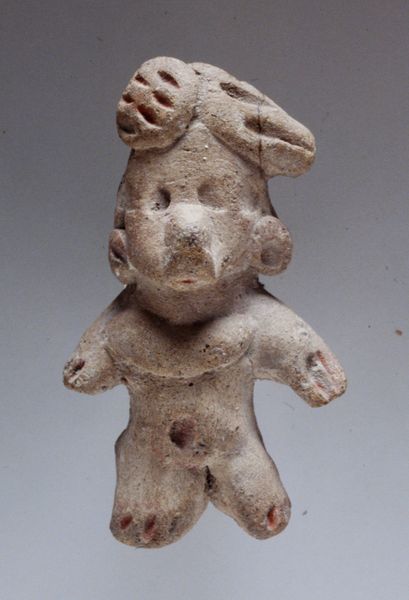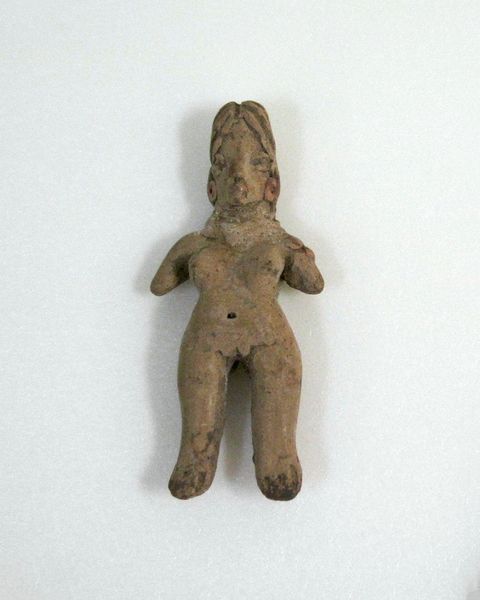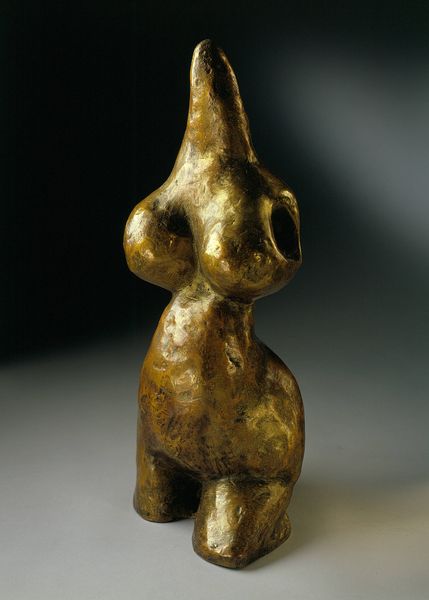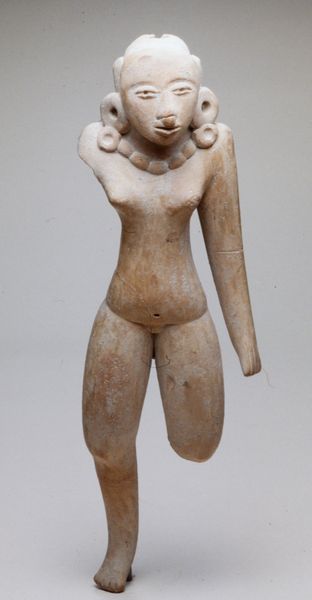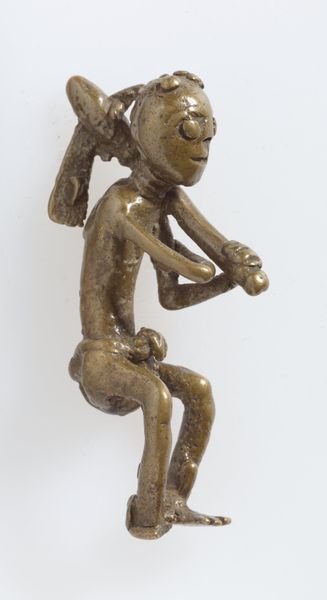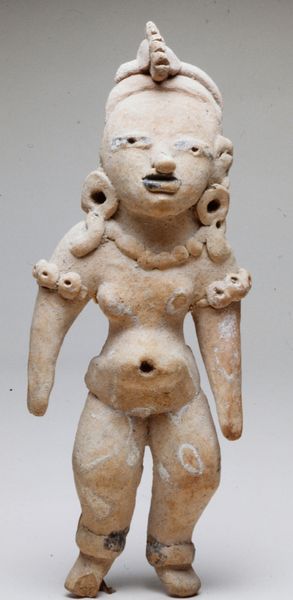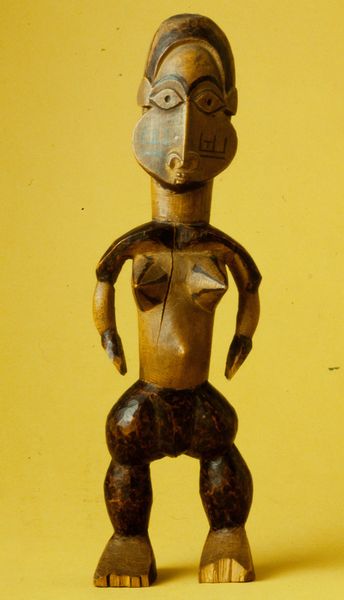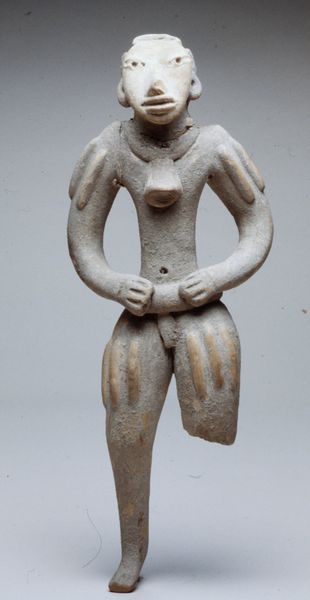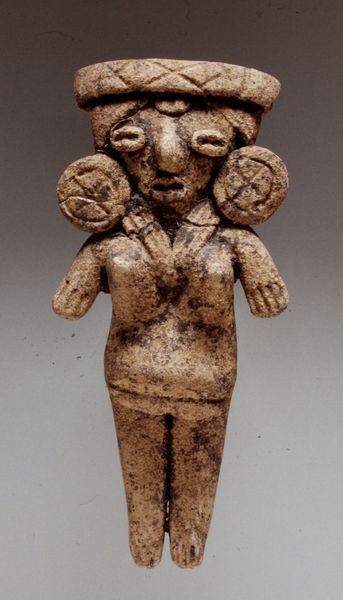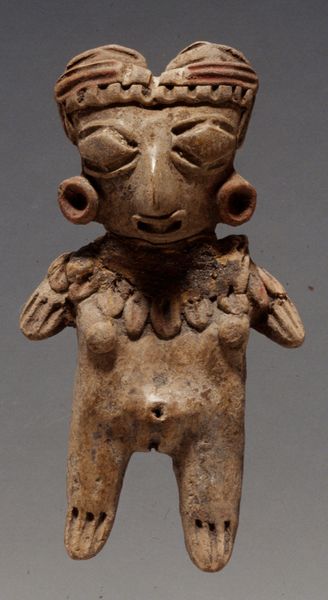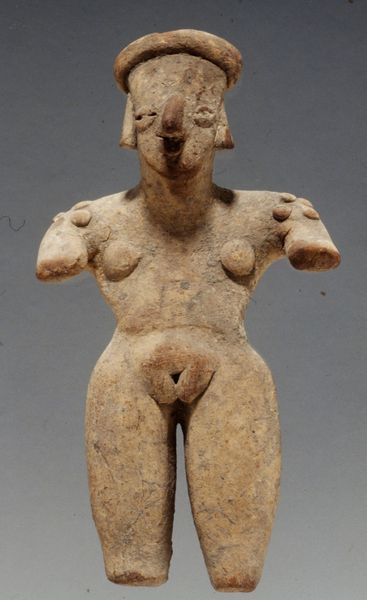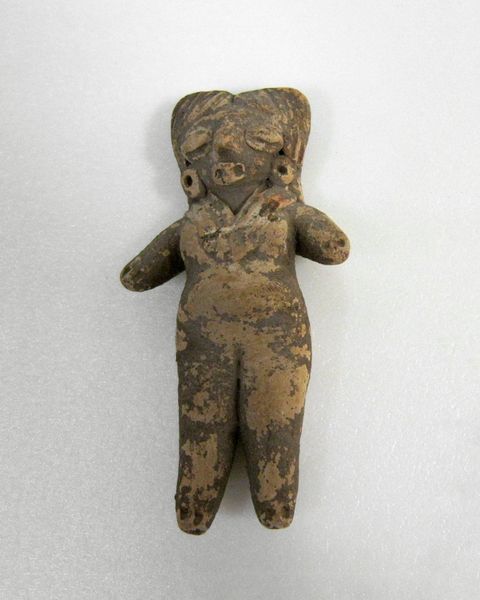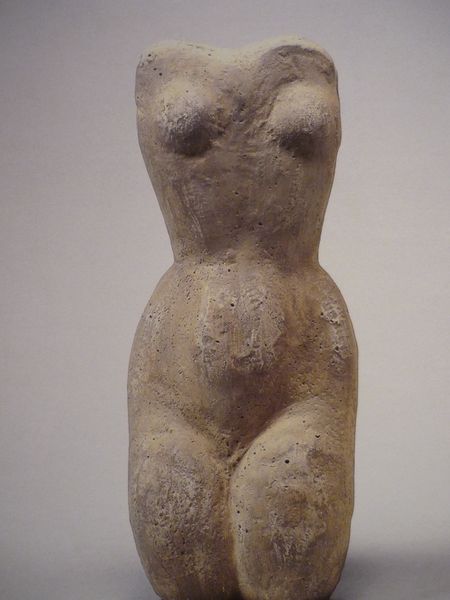
earthenware, sculpture, terracotta
#
sculptural image
#
figuration
#
earthenware
#
sculpture
#
terracotta
#
nude
#
indigenous-americas
Dimensions: 8 1/2 x 3 1/2 x 2 1/4 in. (21.6 x 8.9 x 5.7 cm)
Copyright: Public Domain
Editor: Here we have the "Standing Female Figure," an earthenware sculpture from the Nayarit culture, dating between 100 and 600. It's quite small, and its primitive quality gives it a mysterious, timeless feel. What can you tell me about this piece? Curator: It’s a remarkable example of early Mesoamerican art, isn't it? These Nayarit figures weren't simply decorative. Consider where and how these sculptures were found: typically within shaft tombs, often alongside other offerings. These figures suggest sophisticated funerary practices and a complex social structure. What do you think about that social implication, that idea that even death reflects your social status? Editor: I hadn’t thought about that. The act of burying it, the social statement you leave even when you’re gone. Were they depicting someone specific? Curator: Probably not a direct portrait. These figures are more likely idealized representations connected to fertility rites or ancestor veneration. The nude form itself speaks volumes. Can we interpret its message? Think about the politics of depicting the body, even then. What does the presentation, or lack thereof, communicate about power, gender, and societal values in the Nayarit culture? Editor: That makes me wonder about the intended audience and how the meaning has shifted as it moves into a museum setting today. Curator: Precisely! The act of exhibiting this figure inherently alters its original context and imbues it with new meanings. By presenting it in a museum, we risk aestheticizing a ritual object, transforming it from a piece imbued with deep cultural significance to something to be viewed and appreciated from a distance. What responsibilities do museums have when exhibiting artifacts like this? Editor: This has given me so much to consider about the layered meanings inherent to indigenous art and how our context shapes it. Curator: Absolutely, and it's that layered context that brings depth to our experience and understanding.
Comments
No comments
Be the first to comment and join the conversation on the ultimate creative platform.
